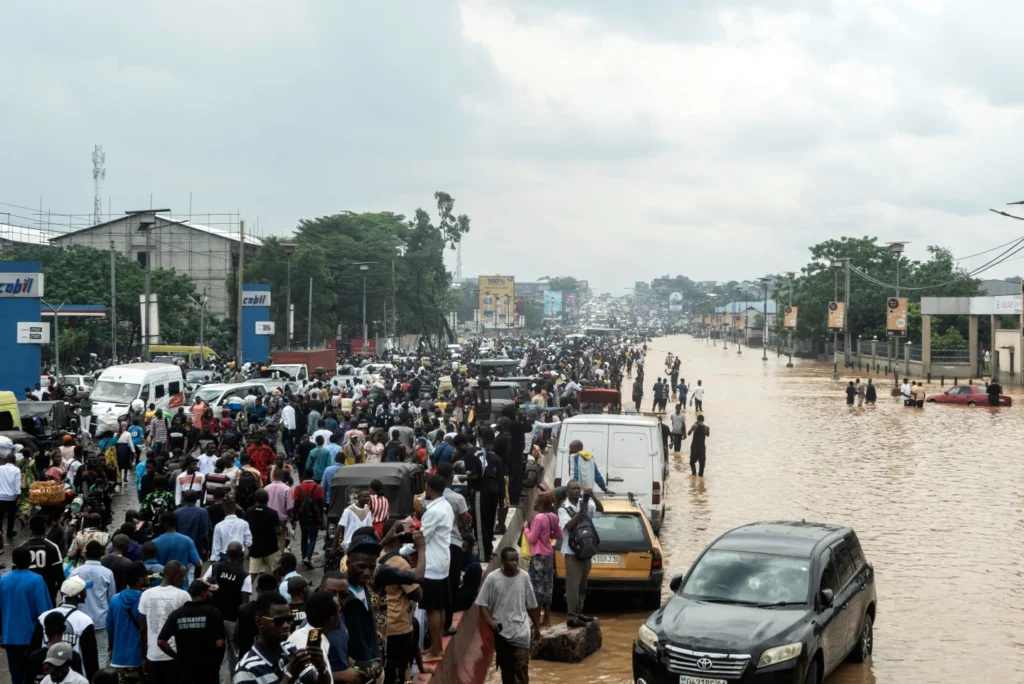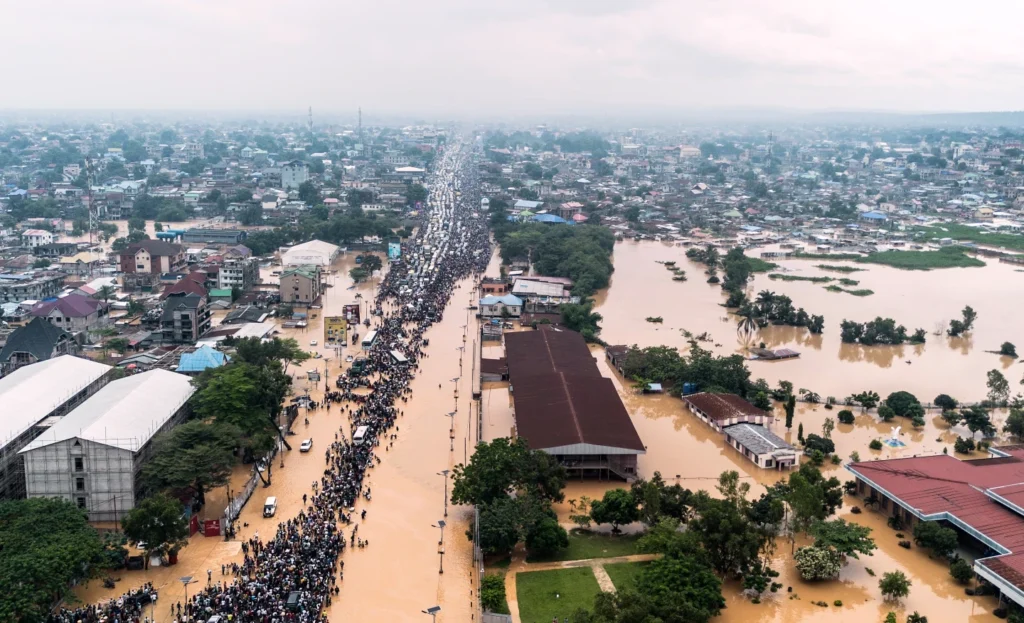At least 22 people have died following catastrophic flooding in Kinshasa, the capital of the Democratic Republic of Congo, after torrential rains swept through the city on Friday. The deadly downpour left large sections of the city submerged, severely damaged key infrastructure, and cut off access to N’djili International Airport—Congo’s main aviation hub—according to government officials.

Provincial health minister Patricien Ngongo confirmed that the majority of fatalities occurred when walls collapsed under the pressure of surging floodwaters. Emergency services have been working through the weekend to rescue trapped residents and recover the dead.
In addition to the 22 confirmed deaths, 46 people were injured and hospitalized, while more than 75 families have been rendered homeless and are now being temporarily sheltered in a nearby stadium.
Flooding severely damaged the main access road to Kinshasa’s international airport, disrupting transportation and supply chains. Although the road has since been reopened to light traffic, full access for heavy vehicles and commercial use is expected to resume within 72 hours, said Kinshasa Governor Daniel Bumba.
This vital road also serves as a major trade link between Kinshasa and the rest of the country. Local truck drivers expressed concern over the stalled flow of goods.
“We’ve been here since nightfall, but we’re not making any progress, because we’ve been told that the road is cut in two, and we have goods that we’re going to pick up,” said Blaise Ndendo, a trucker stranded on the outskirts of the city.

The flooding is the latest in a pattern of deadly weather events in the region. In 2022, more than 100 people died in similar flooding incidents in Kinshasa, raising questions about urban resilience and disaster preparedness in the sprawling city of over 15 million people.
In the aftermath of this week’s disaster, multiple civil society leaders have called for the resignation of Kinshasa’s mayor, citing poor urban planning and governance. Local authorities, however, blamed the destruction on substandard construction, claiming the homes that collapsed were “not built with urban planning standards.”
As rescue and recovery operations continue, the humanitarian toll is growing. Displaced families face uncertain futures, and aid organizations are beginning to mobilize to assist with food, shelter, and medical care.
Flooding remains a persistent threat in Kinshasa, where poor drainage systems, unregulated urban expansion, and heavy seasonal rains regularly combine to create lethal conditions for residents—especially in low-income neighborhoods.



